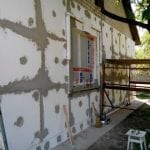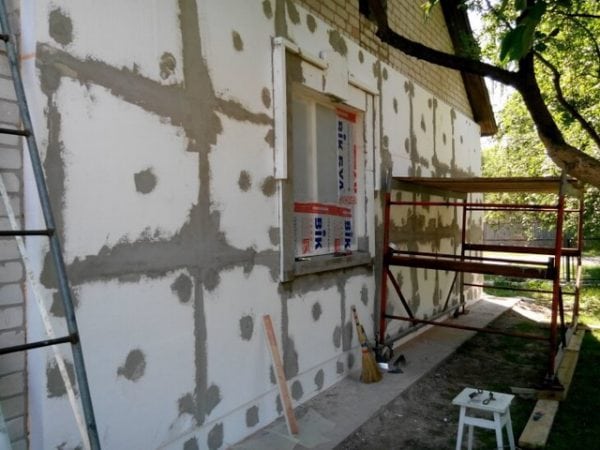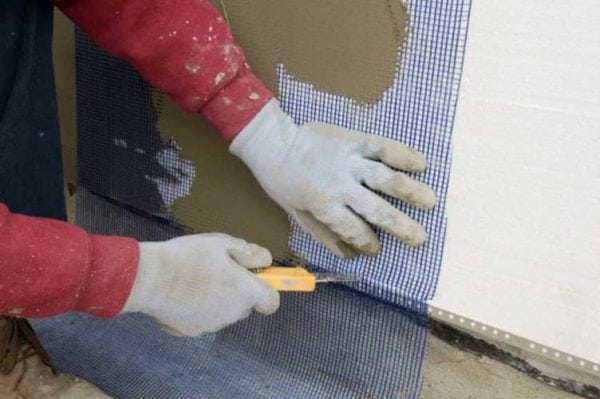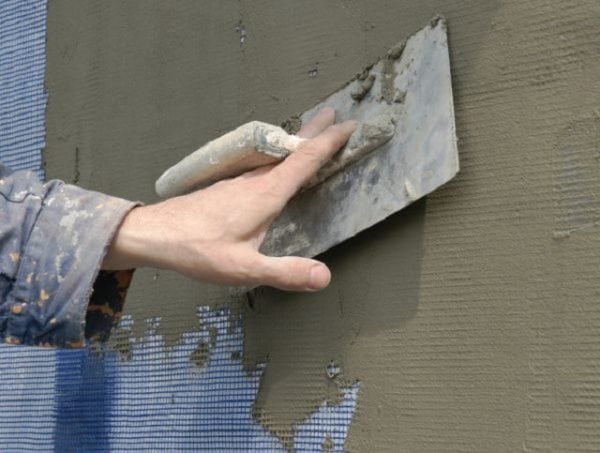Putty for polystyrene foam is necessary, because this inexpensive and moisture-proof insulation is destroyed under the influence of wind, low temperatures and sunlight. Puttying polystyrene foam not only provides its protection from external conditions, but also increases adhesion with materials for decorative finishing. But it’s difficult to putty foam, because it does not adhere well to the solution applied to it.
What gives putty
Foam putty will not only improve the quality of the subsequent finishing, but will also provide the following:
- Strength increase. The material breaks easily during mechanical stress, for example, an ugly hole can form upon impact. Putty protects against such effects.
- Preservation of thermal insulation qualities. Moisture is not dangerous for the foam, but due to the low vapor permeability of the material, moisture particles that have fallen from the foam structure are removed for a long time, which affects the ability to retain heat.
- Improving flame retardant qualities. Expanded polystyrene is very combustible, and the putty applied will serve as an additional way to reduce the risk of fire.
- Protection from wind and sun. Even if interior decoration is carried out, it is impossible to completely avoid contact with sunlight on the material, and they act destructively on the foam structure.
But how to choose a putty solution so that it has maximum protective qualities?
to contents ↑Selection rules
The choice of a suitable mortar is simple, but only putty for expanded polystyrene must be purchased - other building mixes may contain chemical components that destroy its structure. In addition, when choosing a mixture, you need to pay attention to the following:
- Place of work. Depending on whether it is planned to putty in a room or on the street, a facade putty or composition for internal work is selected.
- Release date. Many, wanting to save money, purchase putty mixtures at sales or special promotions. But the closer the expiration date, the worse the strength and protective qualities of the composition will be.
- Storage conditions. In large construction warehouses, you can buy cheaper putty, but there it is most often stored in damp unheated rooms or under a canopy on the street, which means that the mixture was exposed to temperature changes and moisture could get into it. Such compositions, even if they have a rather long shelf life, will be of poor quality.
- The presence of glue. The foam has low adhesion, and without glue, the adhesion of the putty with it will be weak.
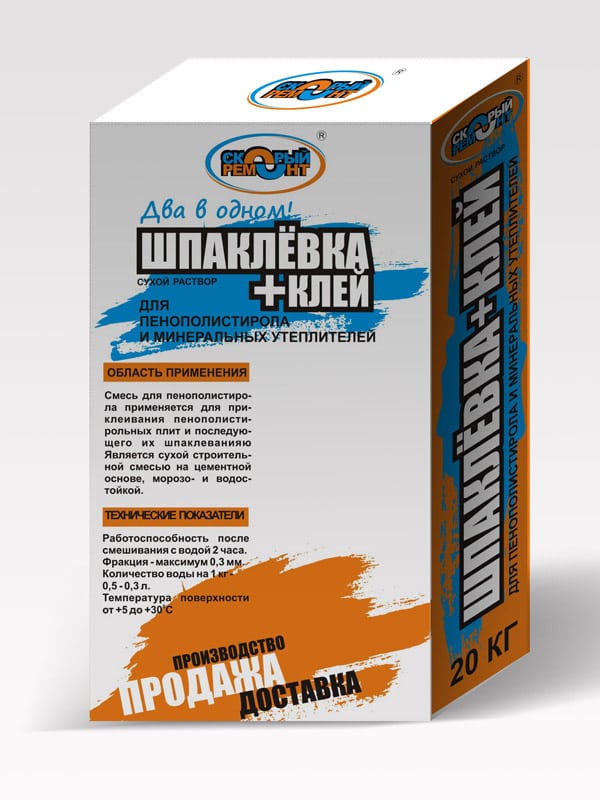
How to putty
Working with polystyrene is slightly different from puttying other materials due to the characteristics of the foam. The first difference is that before applying the putty on the foam surface, a reinforced mesh is glued.
to contents ↑Some masters who do not want to deal with grid stickers are wondering if it can be putty without it. Indoors it is possible, although undesirable, because the repair will turn out not very high quality. But on the street it is impossible to do without reinforcement, otherwise, under the influence of atmospheric phenomena, the putty will soon begin to peel off, and the finish will crack or deform.
Surface preparation
How to putty foam properly? To do this, you must follow several steps:
- Initial preparation depends on whether repeated finishing work is carried out or the insulation is installed for the first time. If repeated puttying is carried out, the surface must be cleaned of dust, dirt and decorative finishes; the reinforced mesh can not be removed.
- The prepared surface is treated with soil. You can take any deep penetration primer that does not contain chemical compounds that are aggressive to polystyrene foam. Masters recommend using PVA glue diluted with water in a 1: 1 ratio for priming.
- After the primer dries, the reinforced mesh is glued. To do this, cut neat strips from the grid along the length of the wall and gently stick it to the foam. To do this, you can use any tile adhesive.
Application
Foam putty is then carried out. This is done in several stages:
- The first layer of the base putty only slightly hides the reinforced mesh, providing a more durable grip on the base. It must be remembered: the thinner the layer of the applied solution, the higher the quality of the finish.
- After drying of the first layer it is necessary to repeat priming. Many masters neglect priming, believing that the putty mixture already contains glue, but this makes the result less quality.
- The second and subsequent layers of the basic putty are applied in order to hide the mesh and level the surface as much as possible. Between layers to increase strength, it is recommended to apply soil.
Finishing finish
After the last layer of the base putty has dried, you can do two ways:
- If you plan to finish with tiles or sticker other decorative elements, then you can start decorating.
- If the final stage will be painting or wallpapering, then it is necessary to achieve maximum smoothness of the surfaces. To do this, the walls are leveled using the finishing putty, and then paint or paste the wallpaper.
Anyone who has ever done putty foam putty can confirm that the process is simple, and if all the steps are followed, you get a warm and beautiful home. Only when purchasing materials do not need to try to save - this will affect the durability of the finish.

